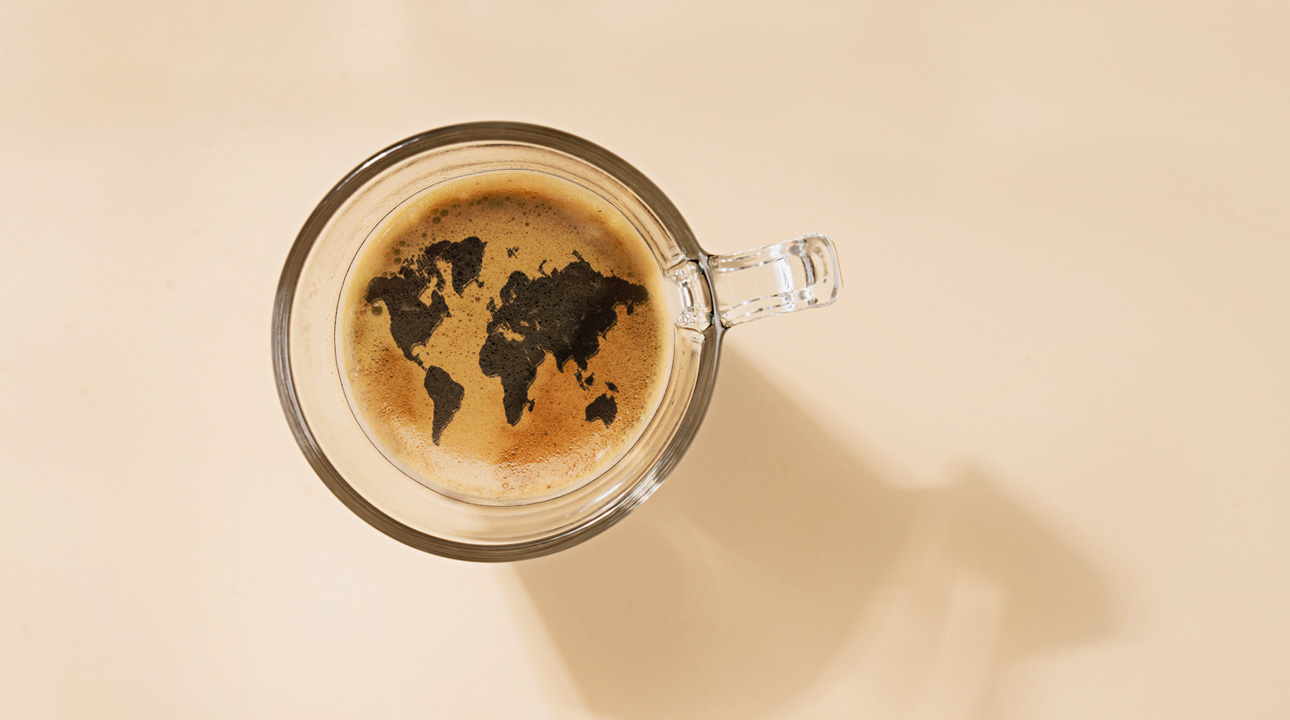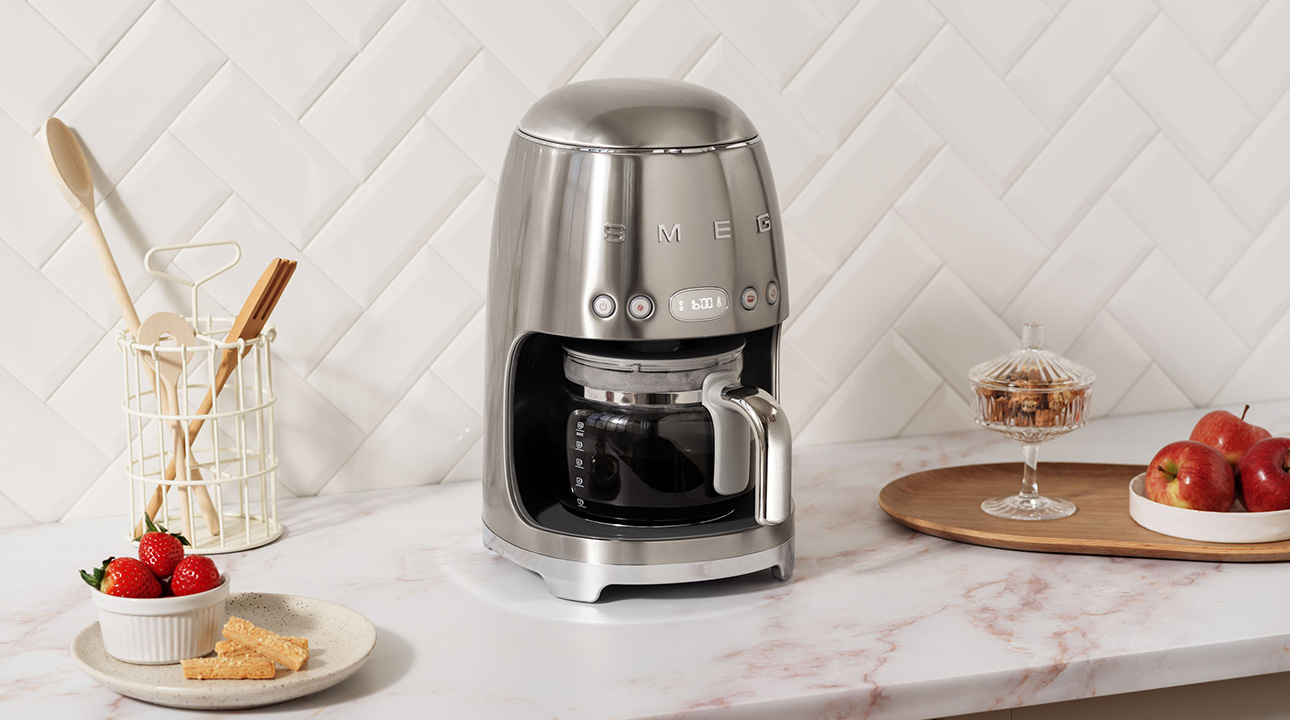
At home, in the office, at cafés, in co-working spaces, in restaurants... There are innumerable places and times of day when we drink coffee, all over the planet. It is estimated that over 100 million sacks of coffee beans are consumed worldwide each year, exported mainly from Brazil, Vietnam, Colombia, Indonesia, Mexico, India and Ethiopia.
Different coffee extraction methods and tasting rituals have been developed around the world.
Travelling throughout the United States, it becomes clear that filter coffee is the most widely used brew: this is a percolation extraction, also known as a 'pour over'. Water passes through a layer of coffee, extracting its flavour, and the residues of the ground coffee are filtered through paper, fabric or a metal mesh. If you ever happen to taste a cup of Americano and find it too bitter, it’s probably due to over-extraction: it needs to be brewed with a coarser grind of coffee.
Today, the electric filter coffee machine is the most widely used for this type of coffee extraction.
The DCF02 filter coffee machine enables you to brew filter coffee in the comfort of your own home by choosing the intensity of its aroma: from the mildest to the most intense flavour.

Touring the Middle East, Greece, and the Balkan countries, it is possible to taste coffee brewed using the Turkish method. The cezve, a long-handled copper and brass pot, is used. Turkish-style coffee is often flavoured with spices such as cardamom and cinnamon, and it is necessary to wait for the powder to settle on the bottom of the cup before drinking it. In this way, the moment of coffee is also appreciated as a ritual of conviviality.
Moving towards Northern Europe, there is the melior method (a jug equipped with a piston filter) or the French press. This is an infusion coffee pot, where water and coffee are left to brew together, helping to ensure an even extraction.
Coffee brewed using the French press has a fuller body and a richer consistency. It looks rather cloudy with some sediment to us since the metal filter only removes the larger fragments of ground coffee.
Let's go back to Italy: in Italian homes, there is the tradition of using the moka, the small coffee pot invented in 1933, consisting of a boiler, a funnel, and a screw-on top. As the water starts to simmer in the boiler, the pressure causes it to rise through the tube leading to the coffee. The brew obtained in this way is extremely strong with a bitter taste. To make this flavour milder, use light roasted coffee grounds and put the moka on medium-low heat.
Finally, we step into an Italian bar: we are in the realm of espresso coffee, the most popular type of coffee drunk when out and about. The term 'espresso' is a synonym of 'freshly brewed': coffee is extracted under pressure, and brewed with a professional machine after being ordered by the customer.
This method manages to extract a true concentration of flavour from the coffee beans: the 'crema', the aroma, the body, and the taste distinguish it from all other coffee-based drinks.
Thanks to technological innovation, espresso coffee has also become popular in homes all over the world. The main types of espresso coffee machines designed for home use are manual, automatic, pod and capsule machines.
The EGF03 is the manual espresso coffee machine fitted with a built-in coffee grinder that enables you to prepare espresso coffee and milk-based drinks. To bring the Italian bar experience to the comfort of your own home.